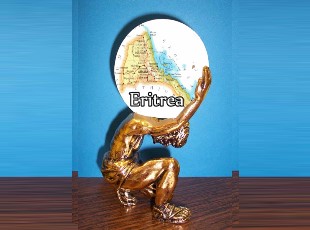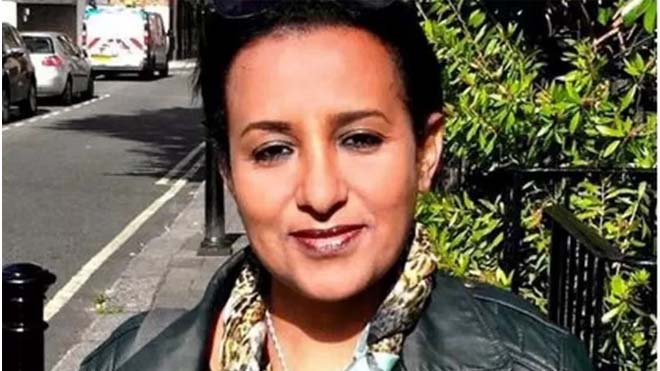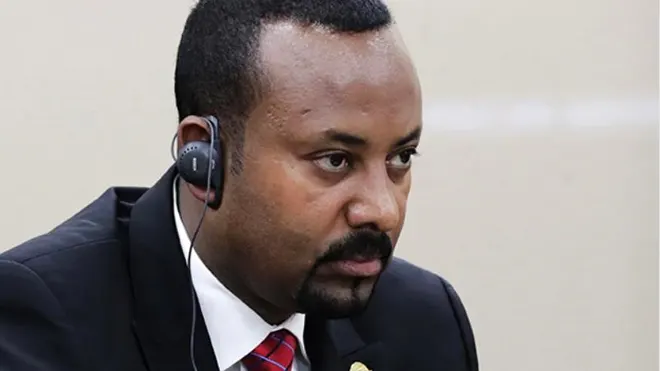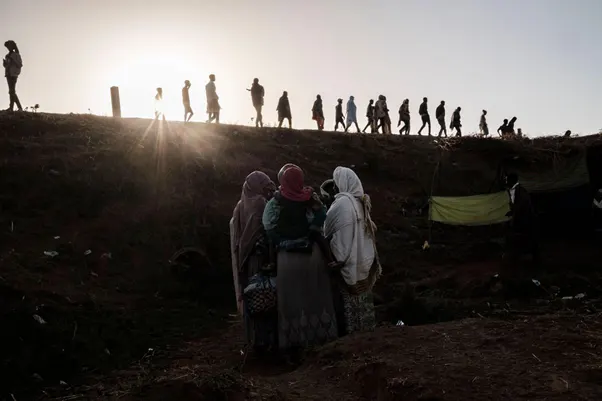Sustaining a Nation
 Issues of Eritrean national identity, the religious, ethnic and linguistic cleavages within it have taken center stage in Eritrean political discourse of late. I think this is a very welcome development. We should all contribute to the debate. Here, in any case, is mine.
Issues of Eritrean national identity, the religious, ethnic and linguistic cleavages within it have taken center stage in Eritrean political discourse of late. I think this is a very welcome development. We should all contribute to the debate. Here, in any case, is mine. The origins of the malaise
A realistic reading of Eritrean history would confirm that Eritrea was in the process of forging a common identity at the end of the Italian period but had not yet fully done so. One can go into the details of that history to prove it, but as we know history does not talk, people do. Looking at what people said and did at that time could thus be a more fruitful approach.
We know that all major sectors of Eritrean society rejected the British proposal of allocating the highlands and the red-sea to Ethiopia and the rest to Sudan. Clearly all Eritreans at the time felt that Eritrea's destiny should be determined as an entity and that it should not be broken up into various pieces. To me, that is an indication that the concept of an entity called Eritrea had made some headway among all sections of Eritrea during the Italian and British periods.
While Eritreans agreed that theirs is and should be a common destiny, they did not agree as to what that destiny should be. Indeed they were divided right down the middle.
Most of the lowlanders opposed union with Ethiopia. There were some exceptions as a sizable part of the low-land elite and some of the ordinary people sided with the unionist. Most of the people in the highlands supported the union. Here again there were exceptions. The Saho's including those in the highlands were largely opposed to the union. The Jeberti were at most ambivalent about it. The former Italian Ascaris mostly sided with the independence group. A small group of Christian highlanders centered around Weldeab Woldemariam and Ra-isi Tessemma opted for independence but one that at least initially included Tigray as part of that independence. this being the so-called Tigray-Tigrigni concept of independence. With important exceptions therefore Christian highlanders were for the union, Muslim lowlanders were for independence.
In the end, Eritreans did not get the opportunity to debate these issues democratically and resolve them. They did not determine their own destiny – The UN did it for them. A federal arrangement that had deep structural flaws and which was not loved by either block was imposed on the Eritrean people.
While Eritreans had thus developed enough of a common identity to reject the break up of their entity created by European colonialism, they had not achieved enough of a common identity to achieve broad national consensus on what the destiny of that entity should be. In other words a common Eritrean identity was work in progress rather than a finished product.
This is not surprising given the fact that much of that entity had been part of the Abyssinian cultural and political space for millennia with the exception of a few centuries after the demise of the Axum empire when Eritrea including the highlands was overrun by the Beja. By the 13th century Abyssinia had reclaimed much of Eritrea. People from across the Mereb repopulated Eritrea. These were mostly Tigrians but included the Agaw (Bilen) and Amharas (some parts of Hamasien). This state of affairs continued right up to the time of Italian occupation. The Italian colonial experience was too brief to erase these millennia old ties between much of Eritrea particularly the highlands and Abyssinia. The Italians tried their best to do that particularly by fostering animosity between Eritreans and Tigreans as a means of breaking the bridge linking Eritreans to Abyssinians as a whole but they made little headway outside of a few urban areas.
It is no wonder therefore that the vast majority of Eritrean highlanders saw no conflict between their newly acquired Eritrean identity and their old ties with Ethiopia. That is why they welcomed Haile Sellasie when he symbolically crossed the Rubicon on the Mereb bridge. It is also no wonder that the Orthodox Church led by people such as Keshi Dimetros played such a vital role in promoting unionism in the highlands because it had always provided the ideological and cultural glue holding the Abyssinian political space together. In their eyes the highlanders were not betraying their Eritreaness when they opted for union, they were simply expressing it in the only way that made sense to them at the time.
The response of Eritrean lowlanders was also explainable by their specific historical experience. Although some parts of the lowlands might have been part of the Abyssinian space for much of recorded history, others were not. Even those that were had lost the connection a century or so before Italian occupation as they became part of the Sudanese/Egyptian political space and as many of them converted to Islam.
As they did not have the ideological glue linking them with Abyssinia, and as they had never had the historical connection or had lost it before Italian colonialism, Eritreanism for the lowlanders meant and could only mean independence. By rejecting unionism, they were not betraying their newly acquired Eritrean identity as the unionists alleged. They were simply expressing it in the only way that made sense to them at that time.
Clearly therefore Eritrea had forged enough of a common identity for there to be broad national consensus on keeping the entity together., but not enough to determine what that common destiny should be. Work in progress indeed. The post Italian period could have completed the work one way or the other but it did not.
The possibility of consolidation of Eritreanism as unionism was subverted by a number of factors. The unionists did not do enough to win over the independence block. The unionist experience did nothing to reassure the independence block and indeed
alienated them further, pushing them into armed struggle. The experience did not reassure the unionists either. Over time many of them became alienated from unionism and Eritreanism as unionism became an orphan.
Those of the independence block started armed struggle against the union in 1961. At that time such a struggle could only garner adequate support in the low lands. It could not but therefore be a war waged by a section of Eritrean society. Very few highlanders could and did join it given the political alignments of the period. Indeed many highlanders fought against it as could be seen from the experiences of Kohain, Tsena Degle or of the police commandos among many others. Indeed it would be correct to state that initially the struggle for independence pitted Eritreans against each other as much as it pitted them against Ethiopian occupation.
It would have required a level of social and political advancement that was clearly not available to the leadership of the ELF for them to deal with the few highlanders who joined them in the initial years of the struggle without any lingering suspicion and in a democratic and accommodative manner. No wonder therefore that ethnic and religious tensions simmered within the organization and sometimes led to tragic events one of which was the establishment of the Issays group – a Christian highland group which became the core of EPLF.
The ELF never managed to evolve into a truly all national organization embracing all the diverse Eritrean groups on the basis of equality and democracy. It never managed to come up with a national narrative that was all inclusive. By the late 60's it was not only unable to adequately manage the highland/lowland divide within itself it was also unable to overcome fissures within its core constituency in the lowlands. As Eritrean highland youth flocked to it in the mid-seventies it was ill-equipped to integrate them all and make them feel at home.
The national narrative it presented stigmatized the unionists and their rejection of the independence struggle. Given the fact that the vast majority of Christian highlanders initially supported unionism, such a narrative could not but create discomfort among the new recruits even if the bulk of Eritrean highlanders were absolved by a transparent sleight of hand of blaming a few corrupt highlanders for the "misadventure" of all of them. The fundamental cracks in Eritrean society were papered over through half baked Marxism that did not have much traction among most of the fighters. In less than six years after the influx the ELF had imploded because it was fundamentally unable to manage the diversity of Eritrean society as reflected within its ranks.
Whatever its pretensions might have been the Issayas group was also a sectional group from the very beginning. After all it was established because of the alleged mistreatment of Christian highlanders by the ELF. After all it symbolically chose to adopt the name of the Christian highlander pro-independence group of the 50s as its initial name (selfi ntesanet). Its main difference with the group of the 50's was that the concept of Tigray-Tigrigni was rejected by the Issayas group. I know there are those who claim that the EPLF did not fully reject the concept. While there is no way of knowing whether
some among its leaders entertained it privately, there is no proof whatsoever that the concept had any relevance to the organizational platform of the EPLF.
The Issayas group came up with its own national narrative which both internalized and rejected the narrative of the ELF. It internalized the ELF narrative in so far as it endorsed the stigmatization of the unionist stand of the Christian highlanders as a betrayal of Eritreanism. It went even further than the ELF in falsely claiming that only a few ignorant and corrupt highlanders embraced the unionist agenda. It endorsed the ELF historiography by almost completely denying the strong historical, cultural and political ties between Abyssinian and much of Eritrea.
The Issayas group went even further than the ELF in its rejection of the historical ties of much of Eritrea with Ethiopia in general and Tigray in particular. They built on the Italian practice of fostering animosity between the Tigrigna speakers on both sides of the Mereb to break the historical linkage. Eritreans from the lowlands did not feel the need to foster animosity towards Ethiopians to prove that they are indeed different from them. The Issayas group and many highlanders felt the need to be more Catholic than the pope to show that they are bona fide Eritreans and what better way of doing so than fostering animosity towards their closest kith and kin across the Mereb.
Such rejection of ones background and identity needs to be compensated for. The compensation was partially achieved through the denigration of the initiators of the struggle as mere bandits and ignorant pastoralists and suggesting that they were all unworthy of the Eritrean national agenda. They internalized the ELF narrative of stigmatizing the unionist stance of the highland and expressing it in a particularly virulent fashion, and rejected the ELF narrative by stigmatizing the initiators of the independence struggle. They in other words rejected all and sundry.
The alternative narrative that they came up with could not thus be anything other than nihilism covered up by Marxist verbiage. It was nihilistic because it attempted to obliterate Eritrean religious diversity through crude atheist propaganda and extreme secularism. It attempted to replace ethnic and linguistic difference with a homogenized Eritrean identity- the Sahil men and women. The Sahil man and woman forged in the rigors of the armed struggle were supposed to be Eritrean first and Eritrean last, without any roots in the diversity of the Eritrean landscape.
Many throughout history have tried to create such a person and failed miserably. The Issayas group could not have been the exception. They could not create such a rootless Eritrean person. In the end therefore the attempt turned out to be a malignant concoction covering up Christian highland chauvinism in the guise of a new Eritrean identity. It is particularly malignant because it is laced with more than a tinge of the idea of the chosen people. The chosen people could be defined as narrowly as the core of the EPLF and as widely as much if not all of the highland people. It most pointedly never included Muslims and Eritrean lowlanders.
The post federal era of Eritrean history had thus a mixed impact on the forging of a common Eritrean identity. Unionism as Eritreanism lost all legitimacy in the eyes of the Eritrean people including in the highlands. Irrespective of whether unionism was ever possible of becoming the primary expression of Eritreanism, such possibility was foreclosed by the failure of the federal experience and by the brutality of Ethiopian occupation particularly during the Derg period.
The narrative of Eritreaness as independence embraced by all based on accommodation of diversity was not consolidated, however. The ELF at least tried to create such a narrative but was unable to create broad national consensus around its narrative because of its sectional roots and the democracy deficit which prevented it from sustainability broadening its base to all sections of Eritrean society. The EPLF started with nihilistic rejectionism and an attempt to create a false and rootless Eritrean identity which ended up becoming a thinly disguised highland chauvinism tinged with the ideology of the chosen people. Eritreanism was thus as much work in progress in 1991 as it was in 1951. The significant difference between the two dates was that in 1991 unionism was no longer a legitimate expression of Eritreanism.
The Way Forward
The debate about Eritrean national identity, about the relation between the lowlanders and highlanders, Christians and Muslims, and various ethnic groups and how Eritrea should be structured to cater for the interests of all of them is in my view an expression of the fact that Eritrean national identity is work in progress. We need to complete the job. In this regard Dr Bereket has said the following in a recent article.
"Whatever we may think of colonialism- however we lament its negative side- we are struck with its preeminent political legacy of disparate groups united in one nation state. Eritrea is one such nation state, and it s need for representative democracy is a function of the need to sustain it as a nation."
I think this is about the only right thing he has written in a long time and that he is more right than even he appears to think.
He is right, we are struck with each other in independent Eritrea, perhaps even more so than many other disparate groups brought together by colonialism. Unionism if it ever was a viable option is no longer one. Separation of the various groups is not an option because even the ethnic based organizations are unable to contemplate it. We are thus struck with each other in more ways than one. We have to find a way to live together in harmony and create an inclusive national narrative to help us do so or else we will start devouring each other.
Dr. Bereket is also more right than he appears to think when he suggests that Eritrea's need for democracy is a function of sustaining itself. A diverse nation such as ours cannot sustain itself unless it goes beyond recognizing its diversity and creates a system for embracing it. Not all democracies are good at embracing diversity, but you cannot have unity with diversity unless you have equality and democracy. That is why Dr. Bereket's constitution will not do. It does not embrace diversity, it doe not provide for real equality. Whatever its democratic pretensions are, it is incapable of sustaining the nation.
Whether we like it or not, the Issayas regime is going to sooner or later collapse under the weight of its own contradictions. The only question is when and the related question of whether by then it will be too late to salvage the nation. The sooner we get rid of the regime, the higher the chance of salvaging the nation. Once the regime is removed we can either overhaul the system and create a democratic one that embraces diversity or we will become a failed state. There really is no other option. The regime cannot be reformed. It can only be overthrown, and completely overhauled in which case we will have a fighting chance of sustaining the nation. A reformed version of the current regime will merely speed up our descent into a failed state.
That is why I am sometimes amused when our arm-chair strategists endlessly talk about soft-landing in Eritrea. The only issue before us is whether there will be a landing at all, however rough it might be or whether we are in for a catastrophic crush. The window of opportunity for any kind of landing is fast closing on us. We should therefore speed up the removal of the regime by all means necessary. Every thing else, is, I think, idle chatter!
I am also amused when our opposition and Diaspora politicians pretend that whatever blueprint they can come up with is likely to be the blueprint that will be implemented in the post Issayas period. They do not seem to realize that when the Issayas regime is finally removed, however this comes about; the whole repressive edifice will come crushing down. Eritrea will then be ground zero. No group will have the means to impose its will on any other group. All sections of Eritrean society will then have to come together and negotiate an acceptable path of change and transformation. Our Diaspora politicians can have no clue about what the final blueprint is likely to be precisely because it will be a negotiated solution. They are unlikely to determine the outcome, because only people who command the respect and support of the Eritrean people will be able to negotiate on their behalf.
What our Diaspora opposition politicians can and should do is stop bickering about the blueprint for the future Eritrea (whatever blueprint they come up with is going to be thoroughly irrelevant) and focus on speeding up the collapse of the regime by all means necessary. They should accept that once that happens a process of dialogue and negotiation should start in Eritrea among the leadership of the Eritrean people mostly traditional leaders (given the thorough discrediting of all political leaders). That is what they can do to give Eritrea a chance for some kind of landing.
May there be a landing in Eritrea soon!
(I hope to write a sequel to this article showing how the nihilistic national narrative of the Issayas group is at the root of the destructive policy of the group in Eritrea and the horn of Africa).


![[AIM] Asmarino Independent Media](/images/logo/ailogo.png)






